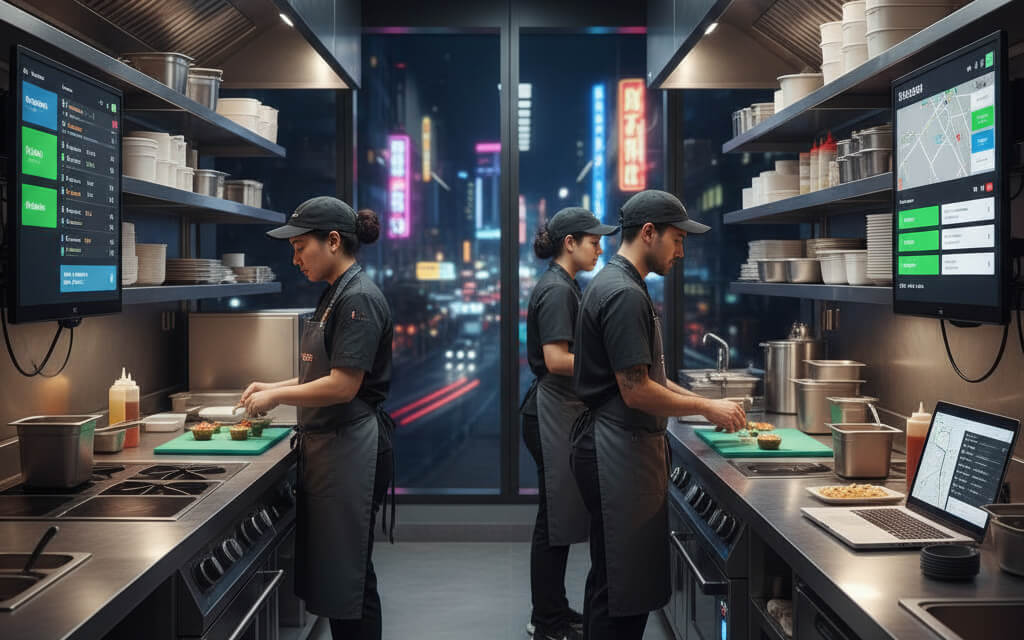October 05, 2025

The restaurant world is changing fast, and one of the biggest trends reshaping it is the rise of ghost kitchens — delivery-only food operations without a traditional dining space. For small restaurant owners, ghost kitchens can mean lower overhead, faster scaling, and new revenue streams — if you know how to make them work.
A ghost kitchen (also known as a cloud kitchen or virtual restaurant) is a commercial cooking space that fulfills online orders exclusively. There’s no dine-in area, no waitstaff, and no signage — just a kitchen optimized for food delivery via third-party apps or your own website.
The rise of ghost kitchens has accelerated post-pandemic as more consumers opt for the convenience of delivery. According to dining trends for 2025, over 60% of consumers now order online at least once a week, and the demand for off-premise dining continues to grow.
Also see: Statista: Global Online Food Delivery Trends — for in-depth data on the delivery market’s growth.
For independent restaurants, ghost kitchens offer a powerful opportunity to:
To truly benefit from these advantages, your online presence must be rock-solid. Learn how to build that foundation with future-proofing your restaurant.
Bonus resource: Forbes on Ghost Kitchens & the Future of Dining — why they're more than just a trend.
Apps like Uber Eats, DoorDash, and Grubhub give you immediate exposure — but at a steep cost. Commissions can reach up to 30% per order, eating into already-tight margins.
That’s why many successful ghost kitchens prioritize direct ordering from their own websites. This approach gives you:
Learn how to add direct online ordering without paying app fees.
Related guide: Square’s Guide to Direct Online Ordering
Just because your business is virtual doesn't mean your brand should be invisible. In fact, digital-first restaurants must work harder to build emotional connections with customers.
Here’s how to make your ghost kitchen stand out:
Use this checklist to optimize your online brand presence.
Pro tip: Looka’s Free Logo Maker can help small restaurants build a brand presence quickly.
Ghost kitchens aren’t for everyone — but for the right operator, they can offer enormous upside. Consider launching a ghost kitchen if:
Before diving in, crunch the numbers. Understand your fixed vs. variable costs, projected delivery volume, and required kitchen staffing. ROI guide can help calculate whether your investment in digital infrastructure will pay off.
Helpful tool: Ghost Kitchen Calculator by CloudKitchens — estimate startup costs and breakeven points.
Ghost kitchens aren’t just a passing trend — they’re a cost-effective evolution of modern dining. Whether you're launching a brand-new concept or expanding your existing restaurant digitally, ghost kitchens let you reach more people with less overhead and greater flexibility.
With the right technology, strong branding, and a seamless website strategy, small restaurant owners can thrive in the ghost kitchen era — all while keeping their local charm and culinary creativity intact.
Stay up to date with the latest tips, expert insights, product reviews, and step-by-step guides to help you grow, create, and succeed—no matter your industry or passion.